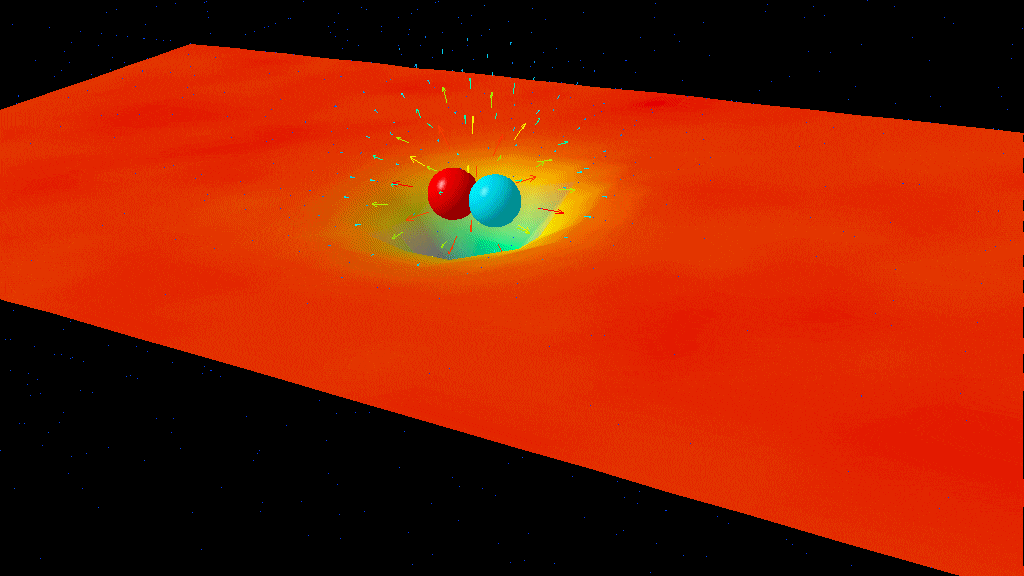Advanced LIGO Just Got More Advanced Thanks To An All-New Quantum Enhancement
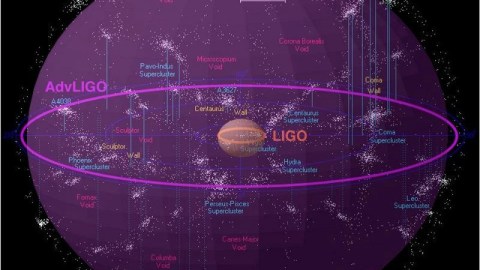
The quest for the ultimate vacuum just got taken to the next level thanks to a new technique: the quantum squeezer.
One of the most understated frontiers in all of physics is the quest for nothing: to create the ultimate vacuum. Any collection of gaseous particles will fly around at ambient temperatures, colliding with one another and exchanging energy, and also confounding any experiment we attempt to perform. In order to probe explicit physical effects, it’s of paramount importance to remove any atoms, molecules, or other particles that could interfere with what we’re seeking to measure.
Ideally, we’d be able to remove each and every one, creating a vacuum more perfect than we’d find in the deepest depths of intergalactic space. In practice, the best vacuum in history belongs to LIGO, at one-trillionth of an atmosphere encompassing a volume of 10,000 cubic meters (353,000 cubic feet). However, both the remaining particles and the fluctuations inherent to quantum fields cannot be removed. But thanks to a fascinating new technique implementing squeezed quantum states, LIGO has just reached unprecedented sensitivities. Here’s the story.
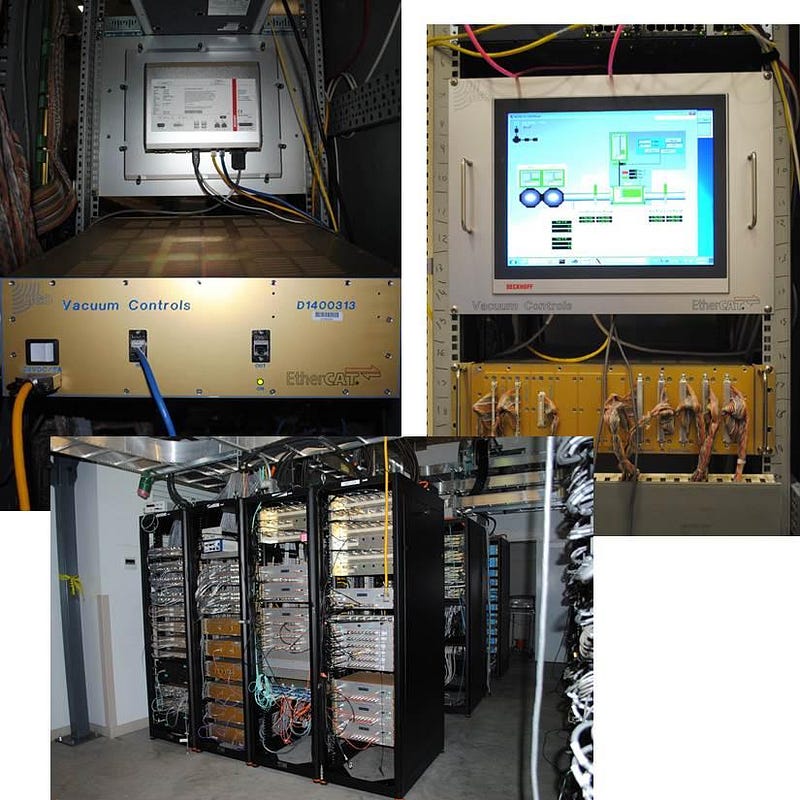
The way that gravitational wave detectors like LIGO work is simple conceptually, but extraordinarily complex in practice. You take a laser, split it into two perpendicular beams, send them the same distance in two different directions (including reflections), and then bring that laser light back together, creating an interference pattern.
In principle, you’d create an initial pattern that would remain constant at all times, only shifting when a gravitational wave passed through. With the right frequency and at the right orientation, a passing gravitational wave would cause one arm to contract while the other expanded, then vice versa in an oscillatory pattern. That’s the pure signal that every gravitational wave detector ever built on Earth is trying to tease out.
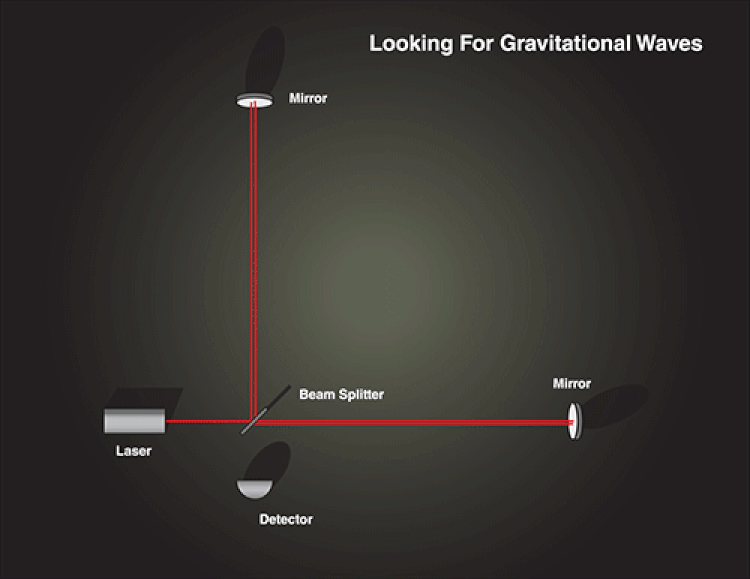
But in reality, there are factors that get in the way of this. The Earth has seismic events and plate tectonics, and that causes an inherent noise or jitter to the signal that cannot be removed. The experiment cannot be performed at absolute zero, and so there’s going to be thermal noise as well as electronic noise from the components of the experiment. And even inside the unprecedentedly good vacuum tubes, there’s still a source of noise.
Some of that noise is due to the residual molecules that could not be removed; they’re still present and there’s no changing that. But some of that noise would still exist even if there were no molecules in there at all. Even empty space, you see, is still filled with quantum fields, and those fields fluctuate, exciting and de-exciting spontaneously. This noise is inherent to the quantum vacuum itself, and has a real, quantifiable effect on gravitational wave experiments.
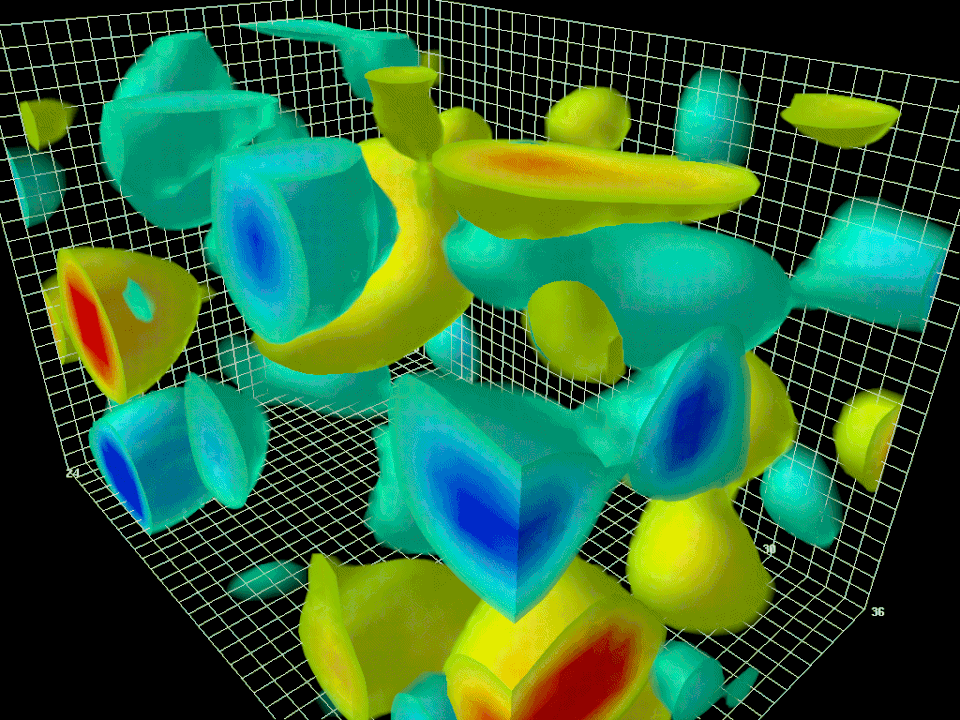
The fact that the quantum vacuum always exists is unavoidable, but that doesn’t mean that LIGO, Virgo, and related detectors cannot improve on their current designs. Earlier this year, they began their third data-taking run, known as O3 for short. There were a wide range of improvements made, including doubling the laser power in the interferometers and reducing the uncertainty in the arrival time of the photons at the detectors. They reduced the noise introduced by stray light, and also upgraded the control scheme.
But perhaps the greatest advance arises from the deployment of a brand new technology: squeezed light. This is a quantum optics technique that works in parallel to reducing the uncertainty in photon arrival times, and has been the greatest upgrade from prior detection runs to the current O3.
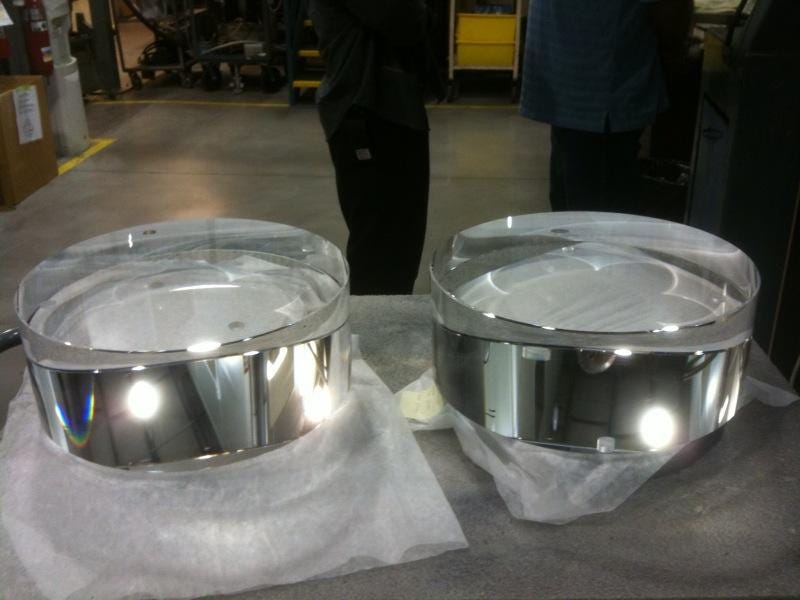
To better understand the kind of noise that gets generated, picture a mirror or a detector getting hit by individual photons: the energy-carrying quanta that light is composed of. The photons come in from one direction, and wind up moving in the opposite direction after striking the mirror, and finally make their way (after multiple reflections) back to the detector.
Even though laser light appears to be continuous, it’s actually made up of an enormous number of these individual photons. Therefore, there are quantum fluctuations not only in the the number of photons that strike each surface at any given moment in time, but also in the arrival time of each photon at the detector. Each individual photon, as it arrives at the detector, comes in like a little ball of energy, creating a “pop” that’s been influenced by every one of these quantum fluctuations it’s experienced, with the total effects of all fluctuations combined adding noise to the overall interference pattern.
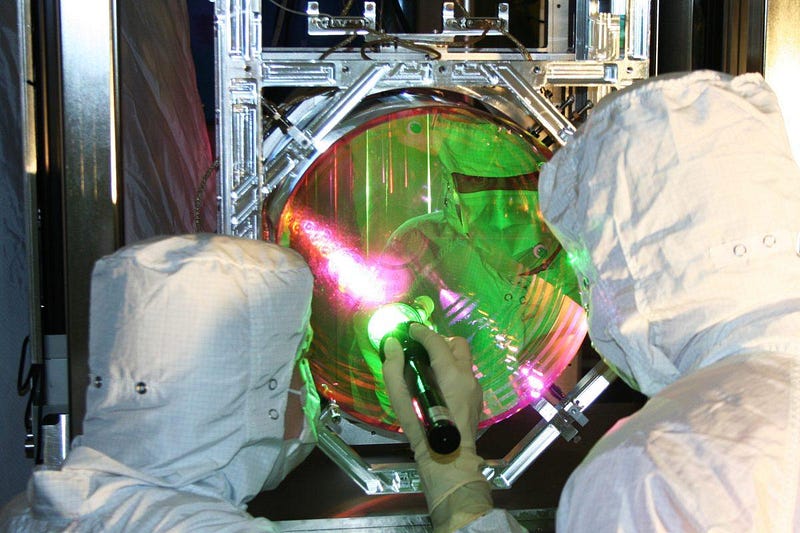
Those extra sources of quantum noise, the arrival time problem and the radiation pressure noise, were the two largest sources of uncertainty during the prior runs of LIGO and Virgo. The fluctuations in the radiation pressure, each time they strike an interferometer mirror, add up to ultimately create uncertainties (and hence, a source of noise) in the detector itself: a problem which the teams plan to address in the future with a quantum filter cavity.
However, there’s a remarkable way to reduce the noise arising from the arrival time problem: through the idea of quantum squeezing. In general, you can imagine that the noise arising from the quantum vacuum affects the phase and the amplitude of whatever signal you’re trying to measure. Sort of like any set of variables where quantum uncertainty arises, the more certain you are about one quantity, the more uncertain your knowledge of the other becomes. Just like you could measure position very accurately by sacrificing your knowledge of momentum, you could decrease the uncertainty in either phase (which affects the arrival time your detector reads out) or amplitude (which is related to the radiation pressure fluctuations) at the expense of an increased uncertainty in the other.
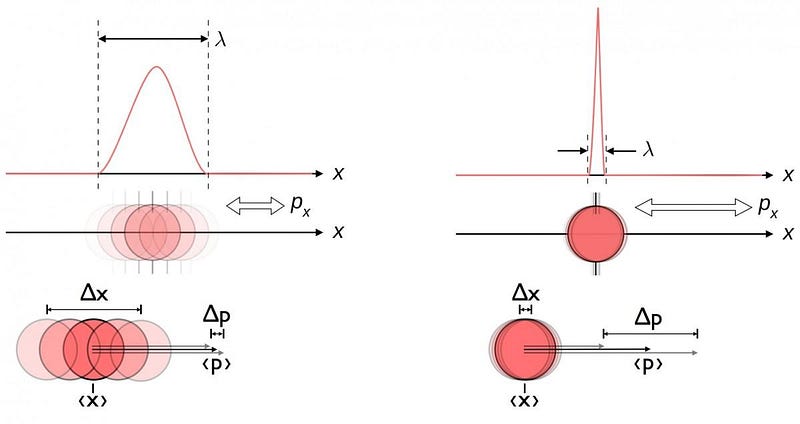
LIGO and Virgo both work by being extremely sensitive to every photon that arrives, but with uncertainties inherent to both phase and amplitude. However, it’s the phase that’s more sensitive to a gravitational wave signal across a large range where the detector is most sensitive. If we could somehow rig the quantum noise to have a greater uncertainty in the amplitude and a smaller uncertainty to the phase, we could improve our detectors’ sensitivities to gravitational waves.
The idea that quantum uncertainty could be controlled in this fashion dates back nearly 40 years, to the early 1980s. However, it’s an extremely delicate proposition: squeezing your uncertainty into one component at the expense of the other is fragile. You might be able to squeeze the vacuum state into that configuration, but it could easily fall apart back into a state where both phase and amplitude have equal uncertainties.
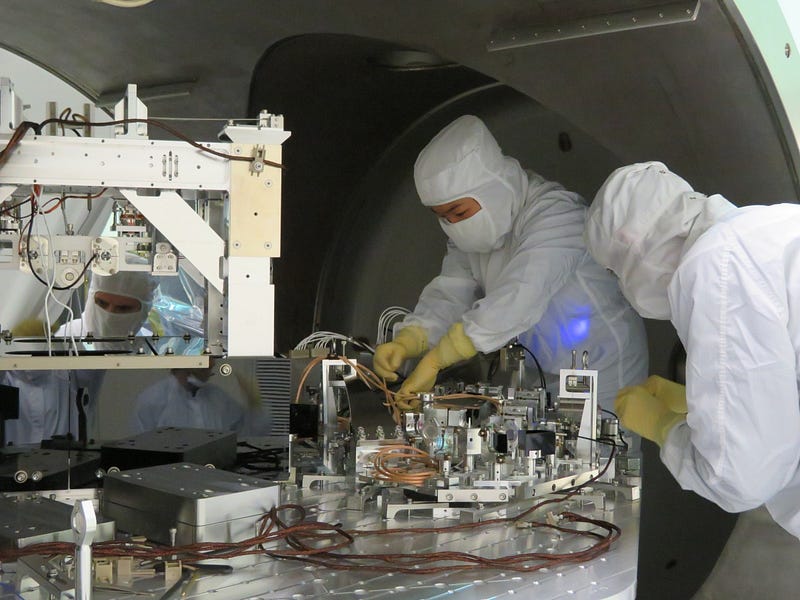
The key advance was to create what’s known as an optical parametric oscillator, which holds a small crystal inside a configuration of mirrors. When you fire a laser into the crystal, the atoms inside the crystal rearrange the photons into a squeezed quantum state; instead of equal uncertainties between phase and amplitude, the phase fluctuations are smaller and the amplitude fluctuations are larger.
This “squeezed” vacuum state makes it easier to detect gravitational waves, thereby improving LIGO’s sensitivity. Overall, the new quantum squeezers have enhanced the expected detection rate by 40% at LIGO Hanford and by 50% at LIGO Livingston. When you combine this with all the improvements and upgrades made to LIGO, the O3 observing run is not only seeing more events than ever before, it’s also finding fainter and more distant signals than it could previously find.
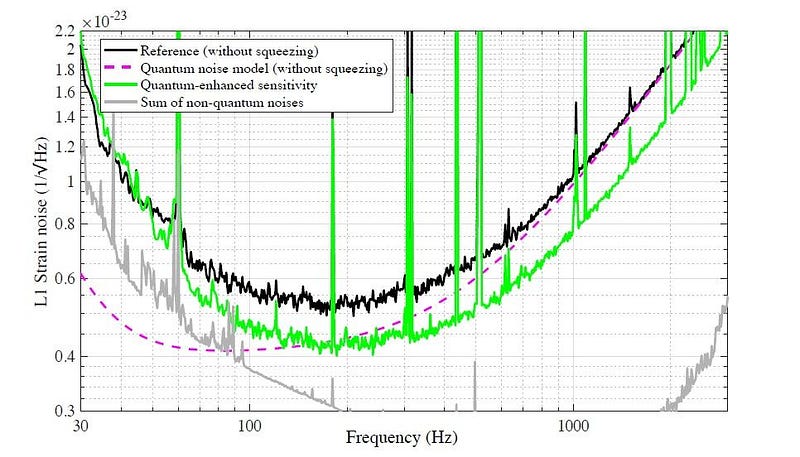
The team that developed these quantum squeezers is led by researchers Maggie Tse and Lisa Barsotti. According to them, perhaps the most exciting result of this development is the opportunity to discover new signals that previous runs of LIGO and Virgo have been insensitive to. It isn’t just that the rate of detection is going up, it’s that there’s a greater potential for discovering unknown sources of gravitational waves.
Pulsar quakes, supernovae, black hole-neutron star mergers and many other events have never yet have their gravitational waves observed, but could emit exactly the type of signal that the upgraded LIGO detectors are newly sensitive to. Even if not, this technology can be implemented in future gravitational wave detectors, such as Cosmic Explorer, to even further enhance their sensitivities. In science, the most important thing you can do is look with new, unprecedented tools for effects you’ve never seen before. That’s the only way, from an experimental perspective, that we advance into uncharted territory.
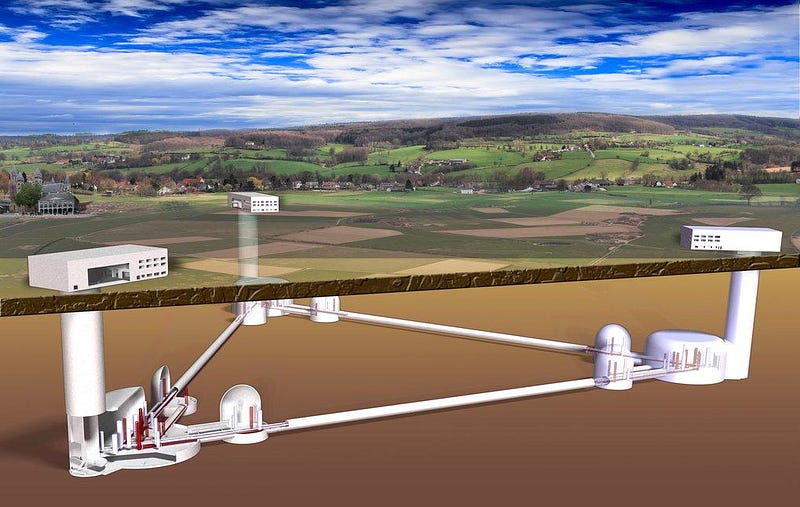
The current observing run of LIGO has been going on since April of this year, and there are already more than double the number of candidate signals than the total number of signals from all previous runs combined. This isn’t due to using the same instruments for longer periods of time, but owes this newfound success to some very exciting upgrades, including this clever new technique of squeezed quantum states.
For decades, scientists have had the idea to leverage squeezed quantum states to reduce the quantum uncertainty in the most important quantities for gravitational wave detections. Thanks to hard work and remarkable advances made by the LIGO Scientific Collaboration, this new, third observing run is already seeing more success than any gravitational wave detector in history. By reducing the phase uncertainty in the quantum vacuum that LIGO’s photons experience, we’re in exactly the right position to make the next great breakthrough in astrophysics.
Ethan Siegel is the author of Beyond the Galaxy and Treknology. You can pre-order his third book, currently in development: the Encyclopaedia Cosmologica.




